‘One who works with his hands is a worker, one who works with their head and hands is an artisan, and one who works with their head, heart and hands is an artist,’ says Murano glassmaker Pino Signoretto in the documentary Murano: the Unbearable Lightness of Glass.
He and other titans of Venice’s craft-driven island have made delicate cristallo sculptures since childhood. They lament a lost culture of making, where one need only hang around the masters manning the furnaces long enough to be taken on as apprentice.
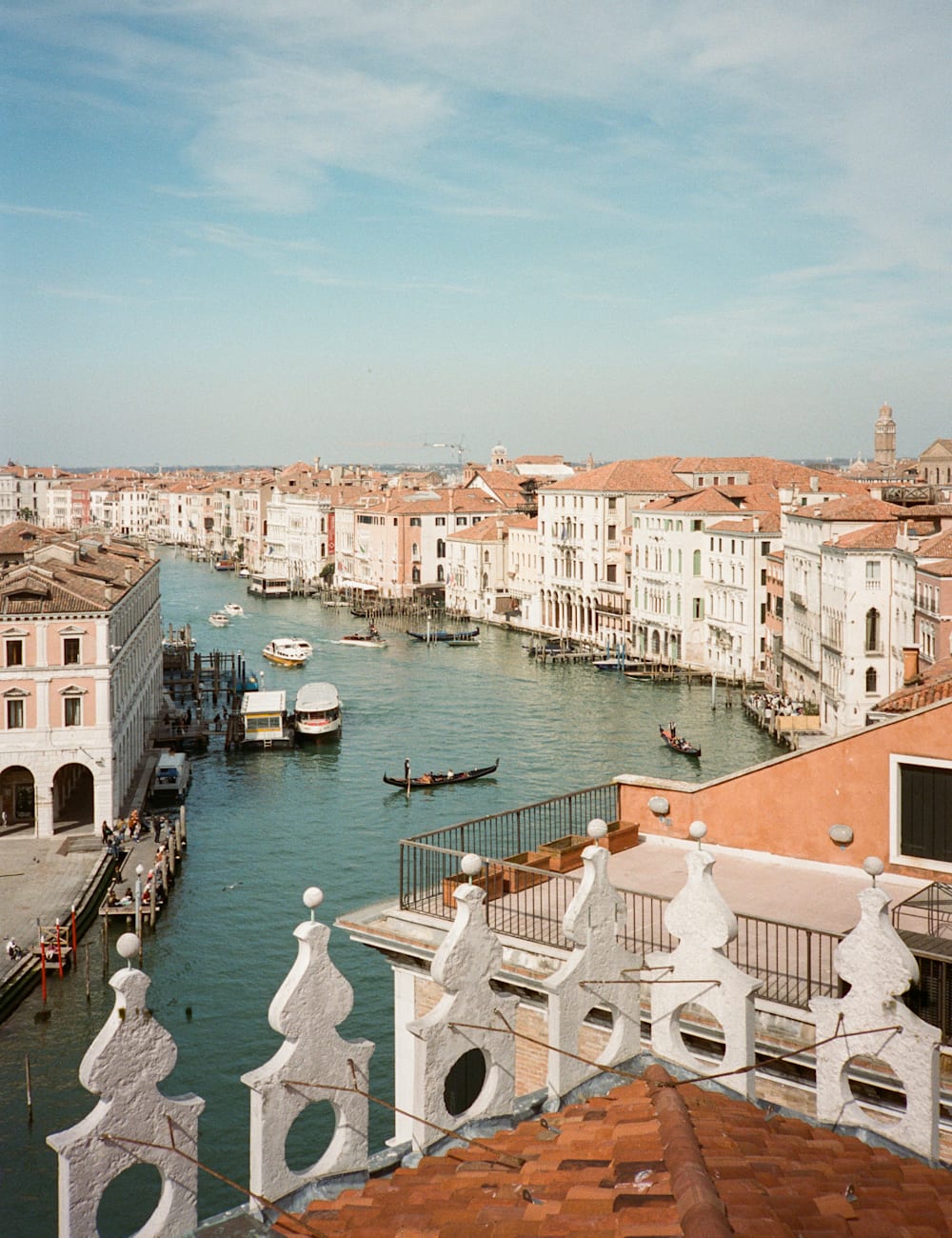
La Serenissima may have a morbid obsession with its own demise, whether it’s at the hands of tourists flooding in like the ever-rising acqua alta or a literal, if leisurely, sinking into the lagoon.
The digital counter keeping track of full-time Venetians, placed in Farmacia Morelli’s window by Venissia campaigners, ticks ominously down; the group even held a faux funeral marking the city’s spiritual passing when it dipped below 60,000.
But, it’s not all doom, gloom, and Thomas Mann – hope comes from within and out; and staying in the freshly minted Nolinski Venezia, a very well-crafted stay in the restored 1929 stock exchange (a majestic melding of art nouveau, stile liberty and modernism, itself), has shown us that the city’s most valuable asset right now are young Venetians taking on the mantle of heritage crafts and inspired talents bringing an influx of innovation from abroad.
NOLINSKI’S ARTISTIC LEGACY
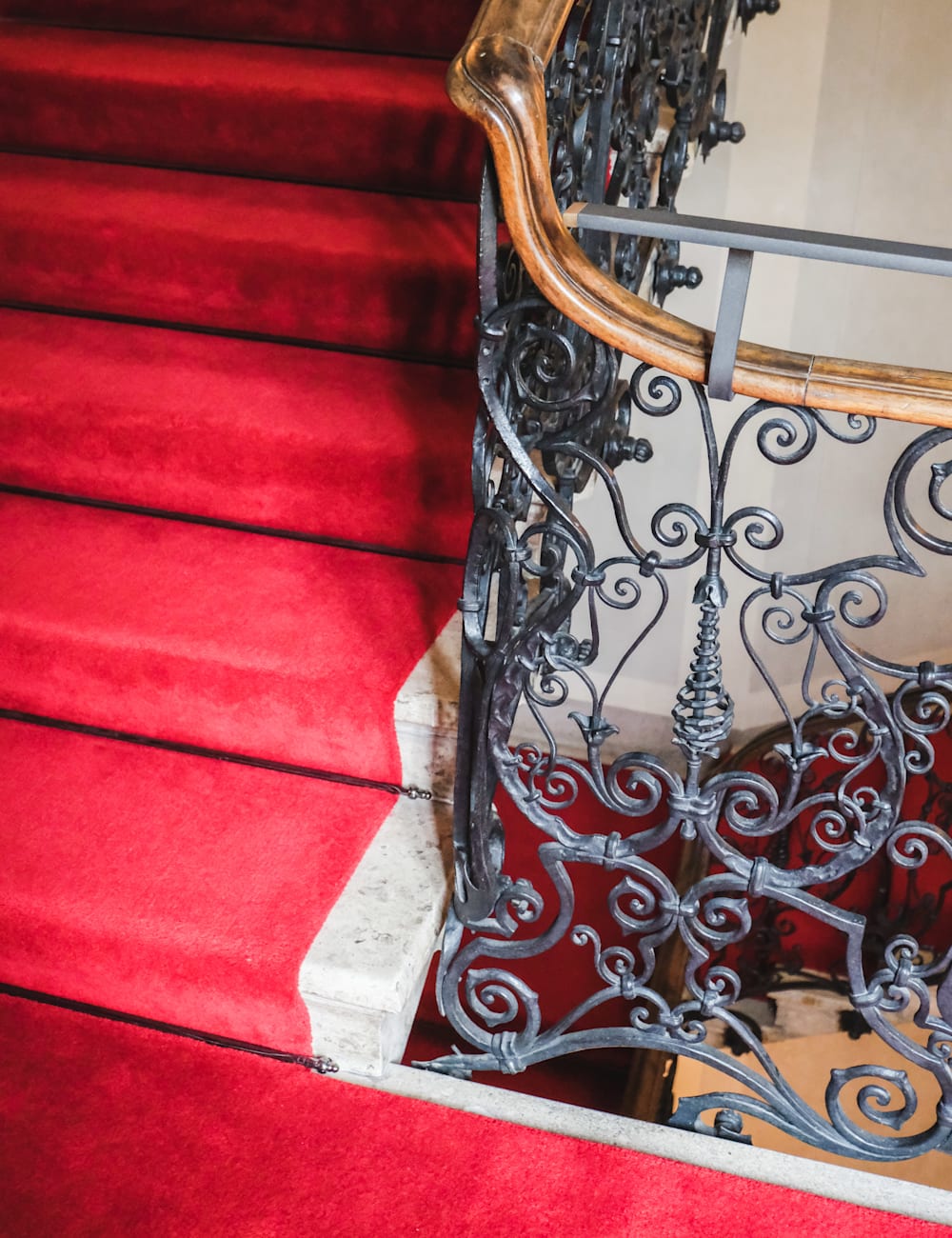
In the 1920s, master glass-maker, ironsmith and architect, Umberto Bellotto, bedecked the chamber of commerce’s imposing building (now Nolinski’s) in masonry depicting Poseidon’s daughters, sea monsters, shells and chimeras – a departure from the heraldic lions prowling the city – in celebration of its maritime prosperity.
And, in becoming the group’s first foray beyond France, there were five years of negotiations to ensure compliance with Venice’s Charter, requiring that monuments aren’t only preserved as works of art, but as evidence of history.
Now, Nolinski meets all the needs of modern travellers – hush-hush tech, an elevator, an even rarer large penthouse Jacuzzi with views out to the Dolomites, Garnier-Thiebaut linens that feel as expensive as they are (a price list is left at turndown should you wish to invest).
And its style feels spiritedly Cinecittà, with retro uniforms for staff, a grand dining space evoking a Pop Colosseum, and the ground-floor Il Caffé doffing its canotier to gondola art, with leather panels resembling the boats’ classic silhouettes. Rooms have scalloped-velvet sofas, silken carpets, polished mid-century-style cabinetry, huge foxed mirrors, original centuries-old portraiture….
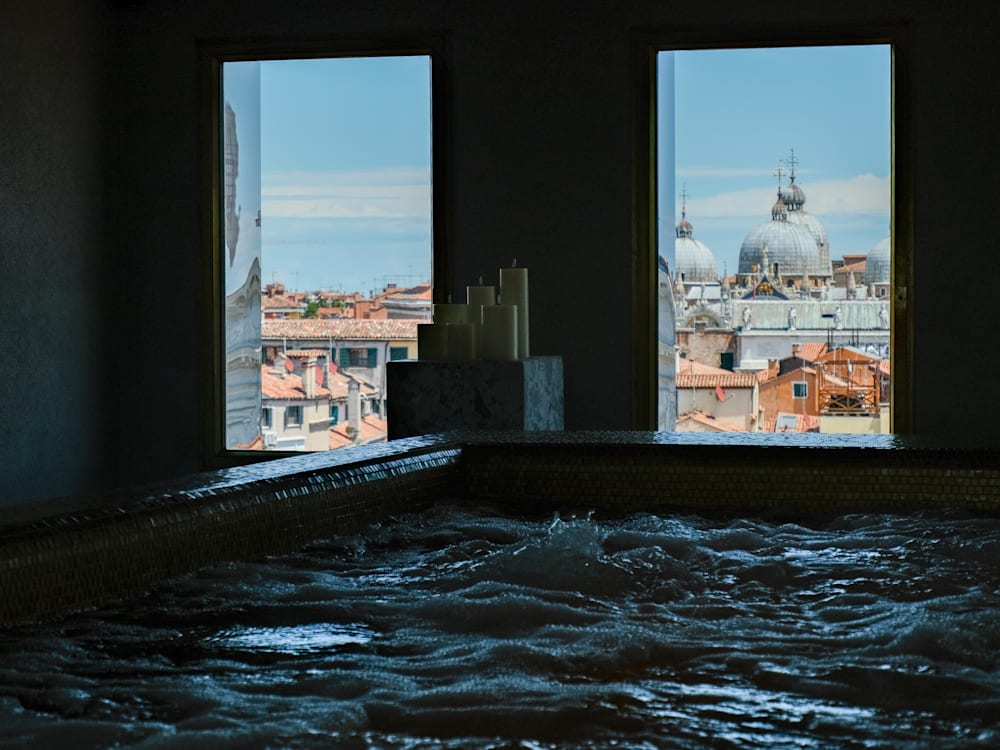
But, they expended the effort wrangling with Venetian red-tape to ensure that history was respectfully observed, from the restored serpentine staircase with Medusa lighting, huge wooden doors for each room, typical Venetian trappings of terrazzo flooring and stucco marmorino, gleaming columns and precious marbles, gold mosaic-tiling.
It’s the work of architect Alberto Torsello (an expert in ‘aver cura’ or ‘taking care’, who has restored crumblier Venetian buildings previously) and French-Italian design duo Yann Le Coadic and Alessandro Scotto (the talents behind the brand’s Parisian Cour des Vosges property).
In the bar, literary curator Anatole Desachy has chosen 4,000 books (many rare and out of print) and commissioned artist Simon Buret (one half of the pop-rock duo Aaron) to paint a sea-themed fresco where sea urchins are stars on the ceiling.
Gallerist Amelie du Chalard secured porcelain artisan Valeria Nascimento for a mod bas relief; historic glass pieces from Arte Vetraria Muranese are displayed, alongside newer works by Mariapia Bellis, in collaboration with maestros Andrea Salvagno and Giacomo Barbini; and they’ve even enlisted sound designers Fred Viktor and Jerry Bouthier to compose Carnival-esque background music.
REBRANDING THE REPUBLIC
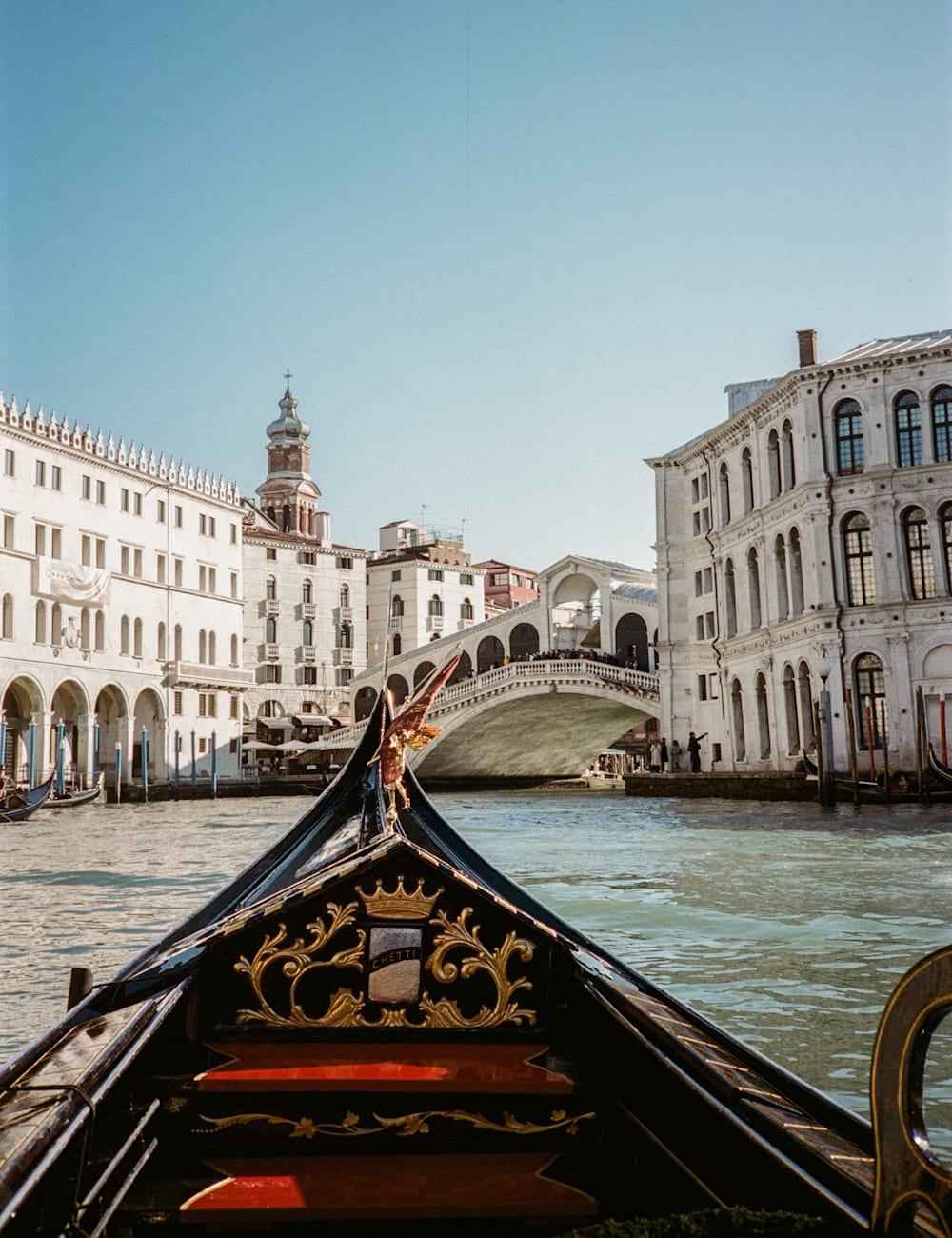
This idiosyncratic mish-mash, pulling on heritage threads, and welcoming outsiders into a fold previously as tightly woven as metallic ganzi cloth, is emblematic of the modern city. The island nation, which only had one fixed bridge (the Rialto) until the 1850s wasn’t always so open-minded.
For one, early mediaeval Venice was subdued by sumptuary laws which banned expensive furs, trailing dress trains, outlandish headdresses, and clothing woven with gold and silver thread, and cut down the height of fashionable chopine platform shoes (some reaching a hobbling 20-plus inches). Despite tailors and rebellious wearers forced to take oaths and facing fines, the citizenry found ever more imaginative ways of serving looks.
The old Republic wasn’t one for sharing either; members of the glass- and mirror-making guilds were threatened with fines, imprisonment and even assassination if they took their skills elsewhere (prompting French King Louis XIV to dispatch spies to Murano and plot out escape routes to Paris with their secrets, as reported in Servane Giol’s Venice: a Private Invitation).
Jan Morris’s spellbinding Venice unearthed accounts of an unfortunate 17th-century alchemist who invented a bottled plague as chemical warfare against the Turks and was thrown in jail to keep it secret; and the maybe-true tale of those who made the zodiac clock in St Mark’s before being blinded by State inquisitors.
THE BIENNALE’S WORLDLY LOOK
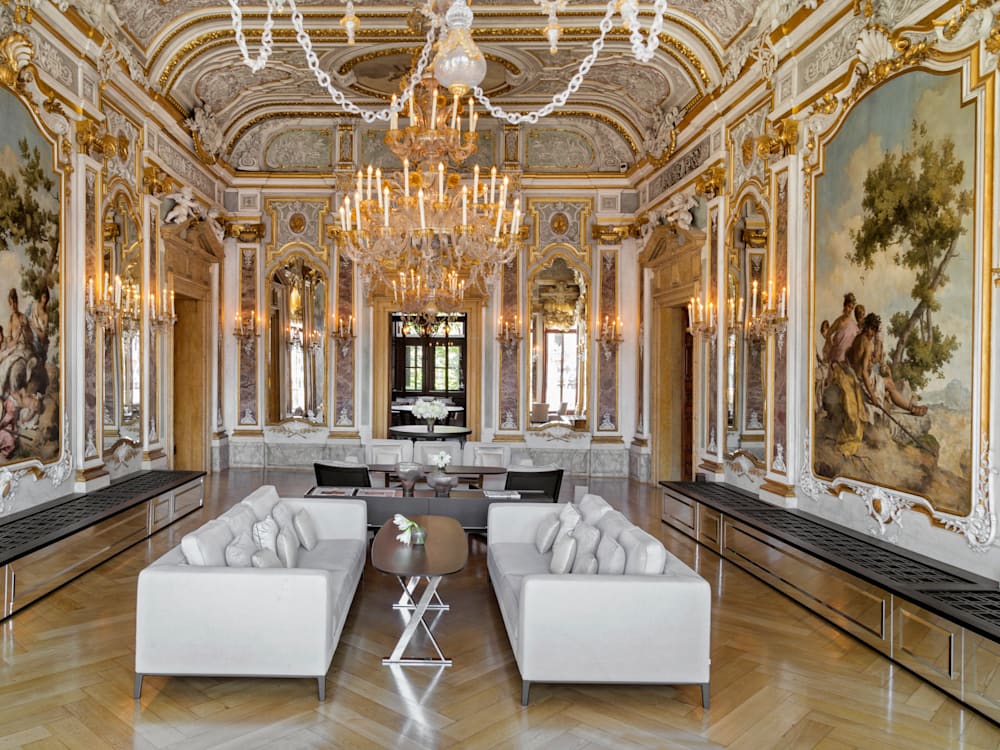
But, like the lavish cristello chandelier hanging in the Aman Venice (the first to be electrified in the city) bright lights have led the way to the future, with makers such as Ettore Sottsass and Gio Ponti taking on the craft mantle.
You only need look at the latest Architecture Biennale to watch the sea changes of this city that’s washed clean by the tides twice daily. The Laboratory of the Future, curated by celebrated Ghanian-Scottish architect Professor Lesley Lokko (the first curator of African descent in the event’s history) takes decolonisation and decarbonisation as its core themes, swivelling the spotlight to Africa and the African diaspora, and tangling with complex issues, from shifting demographics and climate challenges, to equality of resources and spreading urbanity (and addressing the Visa issues some exhibitors faced…).
Further breaking down the boundaries of the exhibition’s Eurocentrism, the Art Biennale in 2024 will be helmed by its first Latin American curator, Adriano Pedrosa, the Brazilian artistic director of the Museu de Arte de São Paulo Assis Chateaubriand.
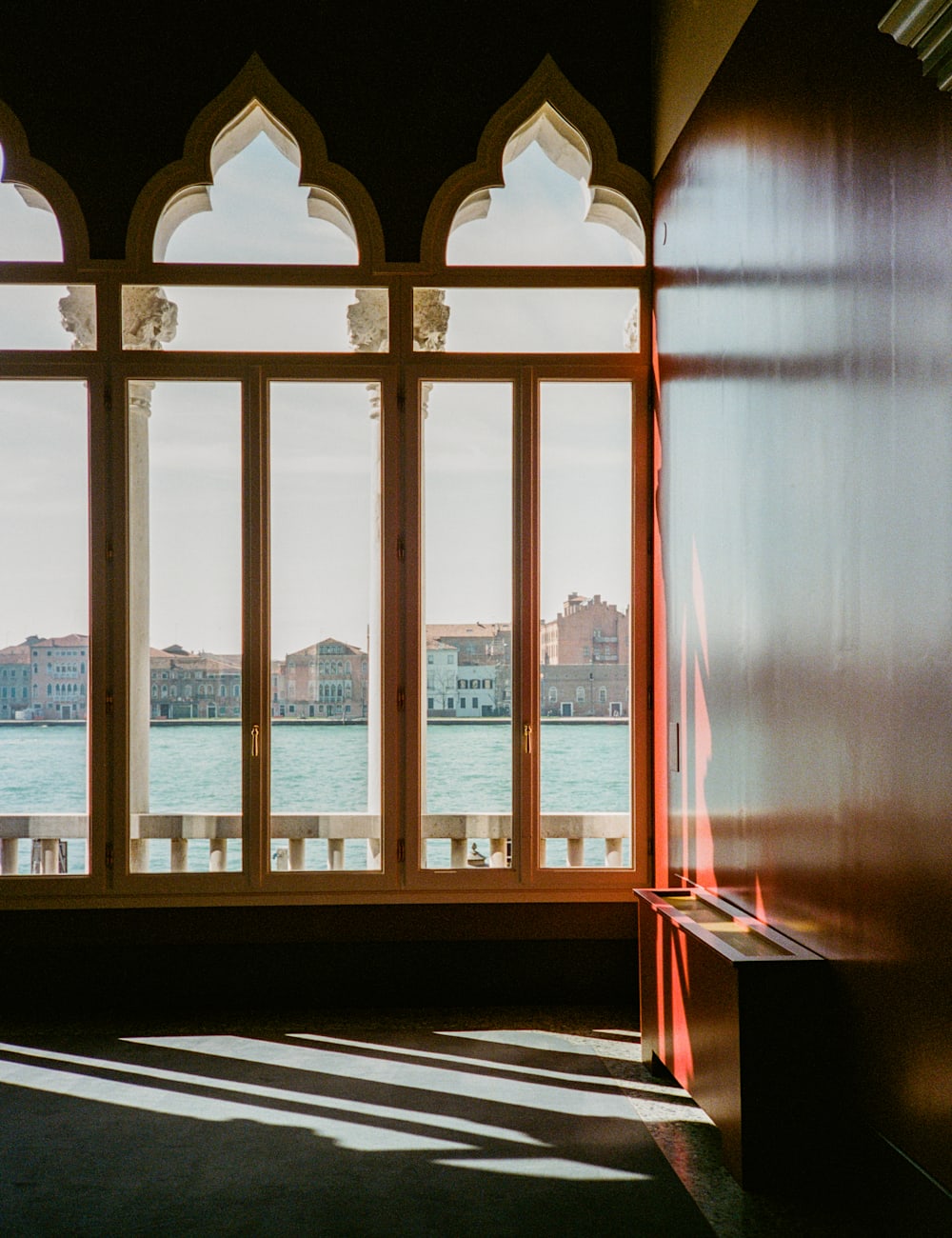
Then there’s the new guard of glass-makers: Chiara Lee Taiarol and Mariana Oliboni of El Cocal Glass Studio, who make covetable contemporary wares in a disco-lit workshop; Dana Arbib, whose boldly shaped vases are inspired by her Libyan heritage; Alice Diaz de Santillana, the great-granddaughter of the legendary Paulo Venini, doing him proud with her colourful objets; and Marcantonio Brandolini d’Adda, lauded maker and frequent curator of Venice Glass Week, who also co-founded the Vital project, dedicated to preserving Venice’s lagoons and nature (a surprisingly biodiverse territory, with even flamingos flocking here).
So, in their careful hands, buoyancy seems assured, with plenty of heart at work alongside Venetian craftspeople’s heads and hands. And, modern stays like Nolinski Venizia, the Venice Venice Hotel or Il Palazzo Experimental are altars – just not ones crowded with cherubim – to the city’s modern innovations and aesthetics, where you can live in lawless sumptuousness, even if just for a night.
VENICE: WHERE TO FIND ITS BEST ARTISANS
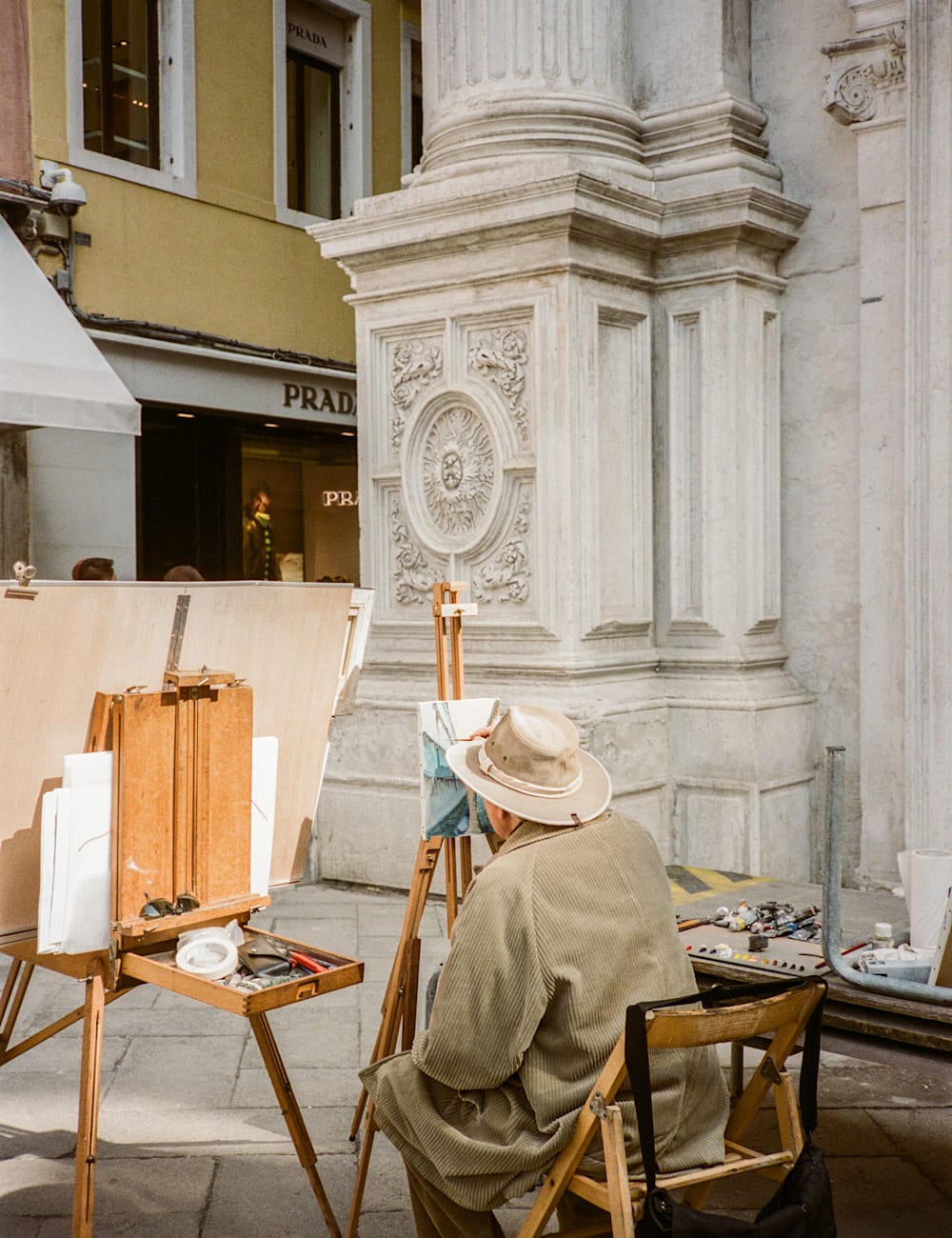
Antiques
Pick up pieces from Venice’s past masters; ask Nolinski’s concierge to arrange a private antiques viewing on a grand scale at both Palazzo Tiepolo, Antichità Giancarlo Ballarin (by appointment only), or Antichità la Colonnina (open 4pm to 7pm).
Art
Invest in modern pieces at Contini gallery, trippy surreal sculptures at Ravagnan, and admire the very-now glass acts at Berengo workshop. Also au courant are the lustrous conversation pieces at Elle Elle on Murano.
Fabrics
Stick it to the 15th-century Venetian senate, by swathing yourself in modern takes on brocade and ganzi cloth at the Fortuny Factory, Luigi Bevilacqua studio, or Rubelli, which also does covetable velvety furnishings.
Paper
Get parchment, handmade notebooks and more at Il Papiro or luxury papers and books made using antique machinery at Paolo Olbi.
Carnival masks
You can’t come to Venice and leave without one of its oldest – and perhaps creepiest – crafts. Used to disguise citizens during the drunken debauchery of Venice’s most beloved celebration (which was eventually outlawed in 1797 and then reintroduced in 1979 to encourage an off-season spike in tourism), these eerie emblems range from the traditional Casanova style with plain features and a tricorn hat, to plague doctor masks with protruding noses (used to hide pomanders back in the day), characterful Commedia dell’Arte visages, and lavish feathered and sequinned iterations. Find all the faces at Ca’Macana.
To enjoy the edible work of artisans, follow our guide to eating like a Venetian
All photography by Michaela Watkinson



